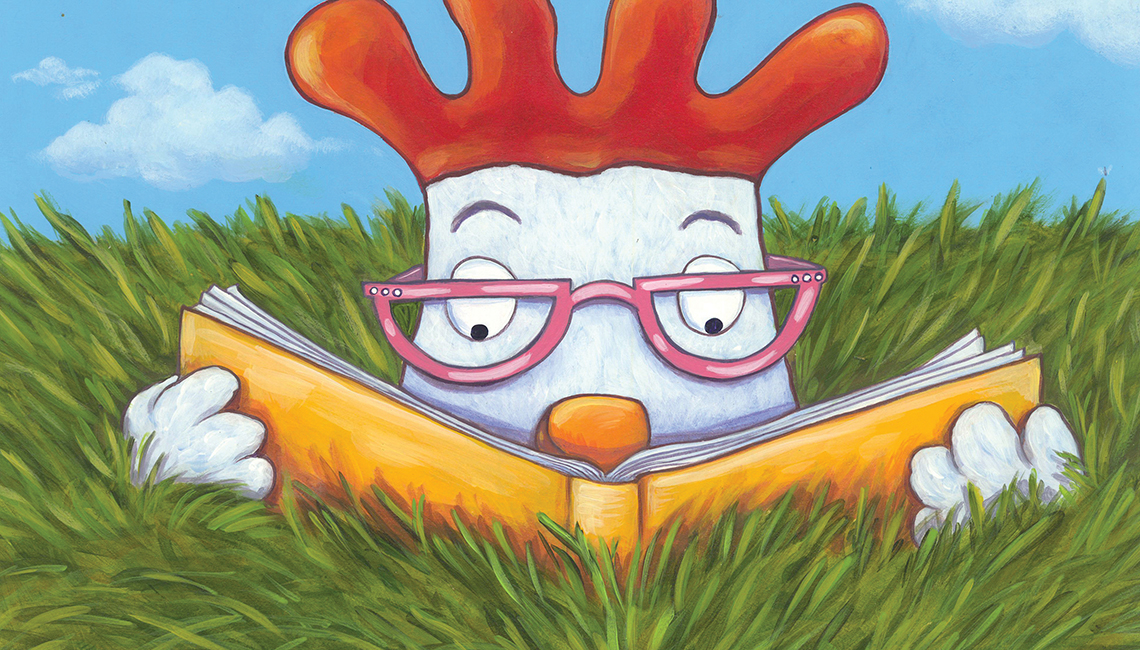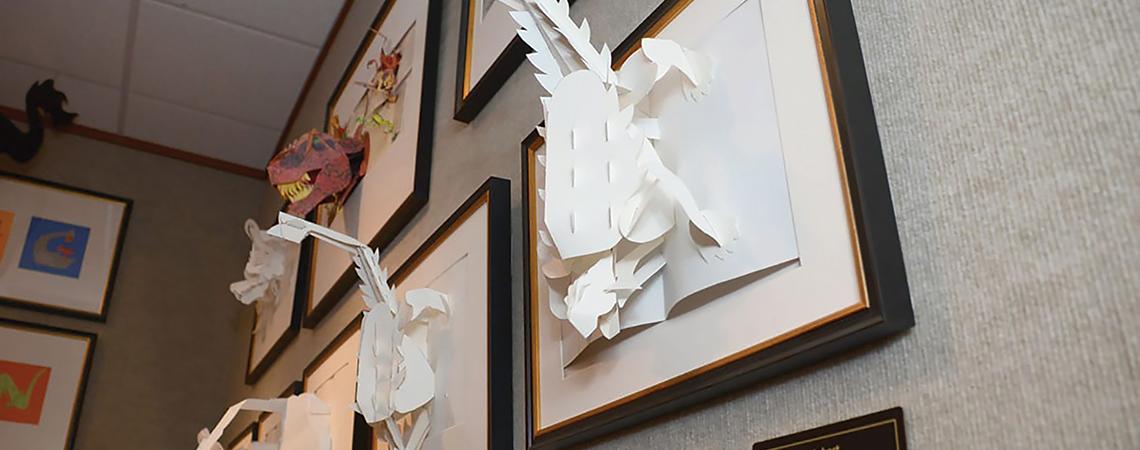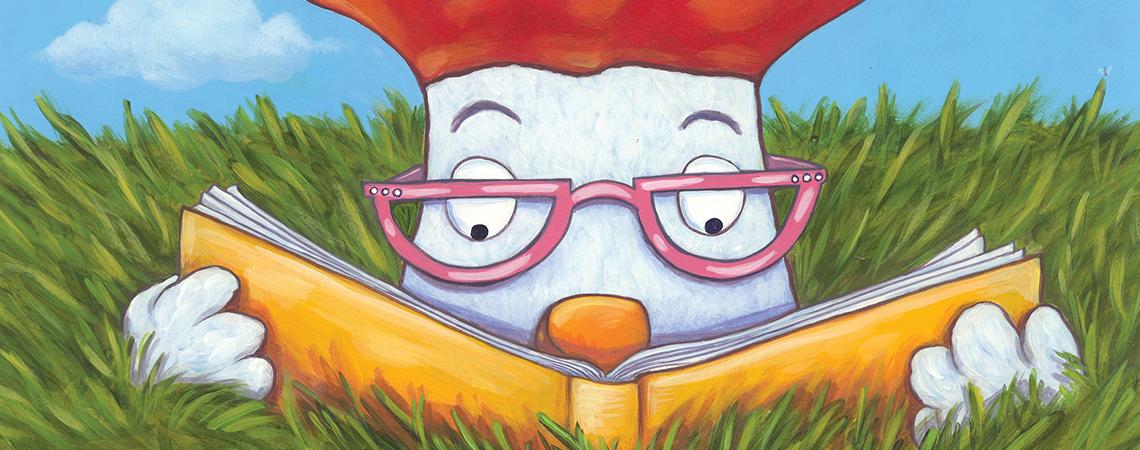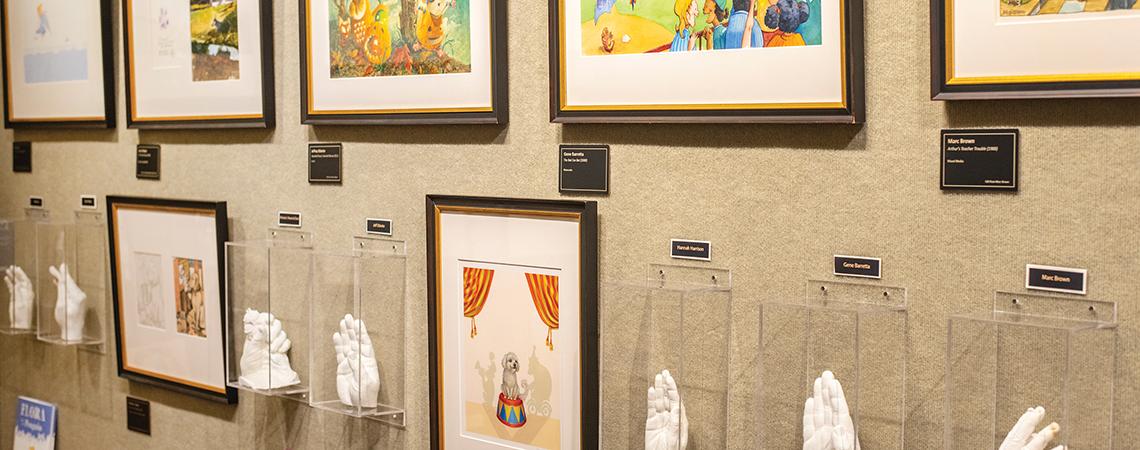What are some lovable wild things, a colorful and very hungry caterpillar, and a big red dog — along with 16,000 of their friends — all doing in Findlay, Ohio?
They’re part of the world’s largest collection of artwork from children’s picture books that’s tucked in a special vault — and showcased in gallery exhibitions — at the University of Findlay’s Mazza Museum.
On view in the Miles Gallery is original artwork and even some personal studio furniture of Hardie Gramatky — an early animator for Walt Disney Studios. He went on to become author and illustrator of 14 picture books, including the Little Toot series.
There, Dan Chudzinski meticulously cares for thousands of works of original art from much-loved books like Where the Wild Things Are; The Very Hungry Caterpillar; Clifford the Big Red Dog series; The Cat in the Hat; Arthur the Aardvark; and many, many more.
“By day, I’m the curator here,” says Chudzinski, who also works as a professional artist. “I look after this amazing collection of children’s-book art and give people a reason to care about the art and experience it firsthand.”
The internationally known museum dates back to 1982, when the late Jerry Mallett, professor of education, proposed the idea. The collection started in the basement of the college’s library with a gift of four pieces of art from alumni August and Aleda Mazza. Today, their namesake museum encompasses 9,000 square feet of airy and welcoming space within the fine arts pavilion on campus.
The immense collection holds nearly 17,000 pieces of children’s-book art — everything from early sketches and storyboards to the original artwork featured in the published books. It’s all safeguarded in the vault, where the temperature, light, humidity, and climate are carefully controlled.
“I spend most of my time in the vault,” says Chudzinski, a Fremont native who originally set out to become a lawyer. A study-abroad trip to art-filled Rome changed his mind, though, and he found his calling to become an artist.
He joined the Mazza Museum in 2015, and now oversees six galleries, where he curates exhibitions that change twice a year.
One of the current exhibitions captivating visitors is the brainchild of Chudzinski, who’s also a sculptor. Titled “Show of Hands,” it features a selection of art from 31 illustrators along with a plaster cast of their hands, allowing visitors to see not only the art, but a replica of the hand that made it.
“The idea started when I met Marc Brown, author of Arthur the Aardvark books,” he says. “I asked him if I could make a mold of his hand and he asked why. I told him a hundred years from now, someone might like to see what the hand that drew Arthur looked like.
“So, I made a mold of his hand in alginate, and a plaster cast from that. We now make molds of the hands of every artist who comes through here. We have over 80 of them.” He says people have a powerful reaction to seeing the artists’ hands. “Our visitors are often already familiar with the creations of our illustrators, but it can be easy to forget that there is a human face and hand behind each work of art.”
Just 3% of the museum’s holdings is on view at any given time, and the displays delight visitors from toddlers to senior citizens. Child-high shelves invite youngsters to leaf through “please touch” books printed with the same illustrations as the art displayed on the gallery walls above them. For small adventurers, there’s even a tempting slide leading from an upstairs loft to the museum below.
“This is a place for everyone who appreciates art and literature and has a love of picture books,” says Ben Sapp, director of the museum.
In normal years, the museum hosts nearly 300 events. There are weekly Tales for Tots gatherings, school-age art workshops, professional development offerings for teachers, conferences, and visits from authors and artists. There are also collaborations with University of Findlay students — sometimes, equestrian majors have been known to bring their horses to the parking lot for Sunday Funday events.
Sapp, who began working at the Mazza Museum 25 years ago as an undergraduate student, can’t pinpoint his favorite children’s book. But he can reflect on being at the helm of the museum.
“What makes this an incredible passion for me? I get to meet the people who create these works of art,” he says. “I meet the people who view the works on our walls, too, and see the impact it has on their lives. It’s really inspiring, and that’s what makes me happy to come in to work every day.”














